Dynamic Obstacle Avoidance for Mobile Robots Based on 2D Differential Euclidean Signed Distance Field Maps in Park Environment
Abstract
:1. Introduction
- Different from traditional dynamic obstacle detection algorithms, we characterize dynamic information in the environment by calculating the rate of change of ESDF values between grid cells in two frames.
- Adding the differential ESDF values to candidate trajectory evaluation achieves a more stable and robust dynamic obstacle avoidance effect.
- Simulation experiments and real-world experiments are performed to evaluate the proposed system.
2. Related Work
2.1. ESDF Map
2.2. Path Planning
3. Proposed System
3.1. System Framework
3.2. The Mapping Module
3.2.1. Occupancy Integration
3.2.2. ESDF Updating
| Algorithm 1 ESDF Updating Algorithm |
| Input: InQ, DeQ Output: local ESDF map
|
3.2.3. Differential ESDF Map
| Algorithm 2 2D differential ESDF map construction algorithm |
| Input: local ESDF map Output: 2D differential ESDF map
|
3.3. The Planning Module
3.3.1. Global Planner
3.3.2. Local Planner
| Algorithm 3 local planner |
| Input: the current target point Output: v, ω
|
4. Experiment
4.1. 2D ESDF Map
4.2. 2D Differential ESDF Map
4.3. Simulated Dynamic Obstacle Avoidance Experiment
4.4. Navigation Experiment in Real-World Scenarios
5. Conclusions
Author Contributions
Funding
Data Availability Statement
Conflicts of Interest
References
- Katona, K.; Neamah, H.A.; Korondi, P. Obstacle Avoidance and Path Planning Methods for Autonomous Navigation of Mobile Robot. Sensors 2024, 24, 3573. [Google Scholar] [CrossRef] [PubMed]
- Tang, Y.; Qi, S.; Zhu, L.; Zhuo, X.; Zhang, Y.; Meng, F. Obstacle avoidance motion in mobile robotics. J. Syst. Simul. 2024, 36, 1–26. [Google Scholar]
- Gupta, S.; Davidson, J.; Levine, S.; Sukthankar, R.; Malik, J. Cognitive mapping and planning for visual navigation. In Proceedings of the IEEE Conference on Computer Vision and Pattern Recognition, Honolulu, HI, USA, 21–26 July 2017; pp. 2616–2625. [Google Scholar]
- Zhu, W.; Qi, Y.; Narayana, P.; Sone, K.; Basu, S.; Wang, X.E.; Wu, Q.; Eckstein, M.; Wang, W.Y. Diagnosing vision-and-language navigation: What really matters. arXiv 2021, arXiv:2103.16561. [Google Scholar]
- Ito, S.; Hiratsuka, S.; Ohta, M.; Matsubara, H.; Ogawa, M. Small imaging depth LIDAR and DCNN-based localization for automated guided vehicle. Sensors 2018, 18, 177. [Google Scholar] [CrossRef] [PubMed]
- Rozsa, Z.; Sziranyi, T. Obstacle prediction for automated guided vehicles based on point clouds measured by a tilted LIDAR sensor. IEEE Trans. Intell. Transp. Syst. 2018, 19, 2708–2720. [Google Scholar] [CrossRef]
- Montiel, O.; Orozco-Rosas, U.; Sepúlveda, R. Path planning for mobile robots using bacterial potential field for avoiding static and dynamic obstacles. Expert Syst. Appl. 2015, 42, 5177–5191. [Google Scholar] [CrossRef]
- Hsieh, C.H.; Liu, J.S. Nonlinear model predictive control for wheeled mobile robot in dynamic environment. In Proceedings of the 2012 IEEE/ASME International Conference on Advanced Intelligent Mechatronics (AIM), Kaohsiung, Taiwan, 11–14 July 2012; pp. 363–368. [Google Scholar]
- Xiao, H.; Li, Z.; Chen, C.P. Formation control of leader–follower mobile robots’ systems using model predictive control based on neural-dynamic optimization. IEEE Trans. Ind. Electron. 2016, 63, 5752–5762. [Google Scholar] [CrossRef]
- Ratliff, N.; Zucker, M.; Bagnell, J.A.; Srinivasa, S. CHOMP: Gradient optimization techniques for efficient motion planning. In Proceedings of the 2009 IEEE International Conference on Robotics and Automation, Kobe, Japan, 12–17 May 2009; pp. 489–494. [Google Scholar]
- Campana, M.; Lamiraux, F.; Laumond, J.P. A gradient-based path optimization method for motion planning. Adv. Robot. 2016, 30, 1126–1144. [Google Scholar] [CrossRef]
- Oleynikova, H.; Burri, M.; Taylor, Z.; Nieto, J.; Siegwart, R.; Galceran, E. Continuous-time trajectory optimization for online uav replanning. In Proceedings of the 2016 IEEE/RSJ International Conference on Intelligent Robots and Systems (IROS), Daejeon, Republic of Korea, 9–14 October 2016; pp. 5332–5339. [Google Scholar]
- Felzenszwalb, P.F.; Huttenlocher, D.P. Distance transforms of sampled functions. Theory Comput. 2012, 8, 415–428. [Google Scholar] [CrossRef]
- Oleynikova, H.; Taylor, Z.; Fehr, M.; Siegwart, R.; Nieto, J. Voxblox: Incremental 3d euclidean signed distance fields for on-board mav planning. In Proceedings of the 2017 IEEE/RSJ International Conference on Intelligent Robots and Systems (IROS), Vancouver, BC, Canada, 24–28 September 2017; pp. 1366–1373. [Google Scholar]
- Han, L.; Gao, F.; Zhou, B.; Shen, S. Fiesta: Fast incremental euclidean distance fields for online motion planning of aerial robots. In Proceedings of the 2019 IEEE/RSJ International Conference on Intelligent Robots and Systems (IROS), Macau, China, 3–8 November 2019; pp. 4423–4430. [Google Scholar]
- Khanna, S.; Srivastava, S. Path Planning and Obstacle Avoidance in Dynamic Environments for Cleaning Robots. Q. J. Emerg. Technol. Innov. 2023, 8, 48–61. [Google Scholar]
- Yang, Z.; Li, J.; Yang, L.; Wang, Q.; Li, P.; Xia, G. Path planning and collision avoidance methods for distributed multi-robot systems in complex dynamic environments. Math. Biosci. Eng. 2023, 20, 145–178. [Google Scholar] [CrossRef] [PubMed]
- Adib Yaghmaie, F.; Mobarhani, A.; Taghirad, H.D. A new method for mobile robot navigation in dynamic environment: Escaping algorithm. In Proceedings of the 2013 First RSI/ISM International Conference on Robotics and Mechatronics (ICRoM), Tehran, Iran, 13–15 February 2013; pp. 212–217. [Google Scholar] [CrossRef]
- Llamazares, Á.; Ivan, V.; Molinos, E.; Ocaña, M.; Vijayakumar, S. Dynamic Obstacle Avoidance Using Bayesian Occupancy Filter and Approximate Inference. Sensors 2013, 13, 2929–2944. [Google Scholar] [CrossRef] [PubMed]
- Dijkstra, E.W. A note on two problems in connexion with graphs. In Edsger Wybe Dijkstra: His Life, Work, and Legacy; Association for Computing Machinery: New York, NY, USA, 2022; pp. 287–290. [Google Scholar]
- Hart, P.E.; Nilsson, N.J.; Raphael, B. A formal basis for the heuristic determination of minimum cost paths. IEEE Trans. Syst. Sci. Cybern. 1968, 4, 100–107. [Google Scholar] [CrossRef]
- Stentz, A. Optimal and efficient path planning for partially-known environments. In Proceedings of the 1994 IEEE International Conference on Robotics and Automation, San Diego, CA, USA, 8–13 May 1994; pp. 3310–3317. [Google Scholar]
- Dolgov, D.; Thrun, S.; Montemerlo, M.; Diebel, J. Practical search techniques in path planning for autonomous driving. Ann. Arbor. 2008, 1001, 18–80. [Google Scholar]
- LaValle, S.M.; Kuffner, J.J., Jr. Randomized kinodynamic planning. Int. J. Robot. Res. 2001, 20, 378–400. [Google Scholar] [CrossRef]
- Karaman, S.; Frazzoli, E. Sampling-based algorithms for optimal motion planning. Int. J. Robot. Res. 2011, 30, 846–894. [Google Scholar] [CrossRef]
- Ly, A.O.; Akhloufi, M. Learning to drive by imitation: An overview of deep behavior cloning methods. IEEE Trans. Intell. Veh. 2020, 6, 195–209. [Google Scholar] [CrossRef]
- Le Mero, L.; Yi, D.; Dianati, M.; Mouzakitis, A. A survey on imitation learning techniques for end-to-end autonomous vehicles. IEEE Trans. Intell. Transp. Syst. 2022, 23, 14128–14147. [Google Scholar] [CrossRef]
- Zheng, B.; Verma, S.; Zhou, J.; Tsang, I.W.; Chen, F. Imitation learning: Progress, taxonomies and challenges. IEEE Trans. Neural Netw. Learn. Syst. 2022, 35, 6322–6337. [Google Scholar] [CrossRef]
- Zhu, Z.; Zhao, H. A survey of deep rl and il for autonomous driving policy learning. IEEE Trans. Intell. Transp. Syst. 2021, 23, 14043–14065. [Google Scholar] [CrossRef]
- Xie, Z.; Xin, P.; Dames, P. Towards safe navigation through crowded dynamic environments. In Proceedings of the 2021 IEEE/RSJ International Conference on Intelligent Robots and Systems (IROS), Prague, Czech Republic, 27 September–1 October 2021; pp. 4934–4940. [Google Scholar]
- Fan, T.; Long, P.; Liu, W.; Pan, J. Distributed multi-robot collision avoidance via deep reinforcement learning for navigation in complex scenarios. Int. J. Robot. Res. 2020, 39, 856–892. [Google Scholar] [CrossRef]
- Wang, K.; Li, J.; Xu, M.; Chen, Z.; Wang, J. LiDAR-Only Ground Vehicle Navigation System in Park Environment. World Electr. Veh. J. 2022, 13, 201. [Google Scholar] [CrossRef]
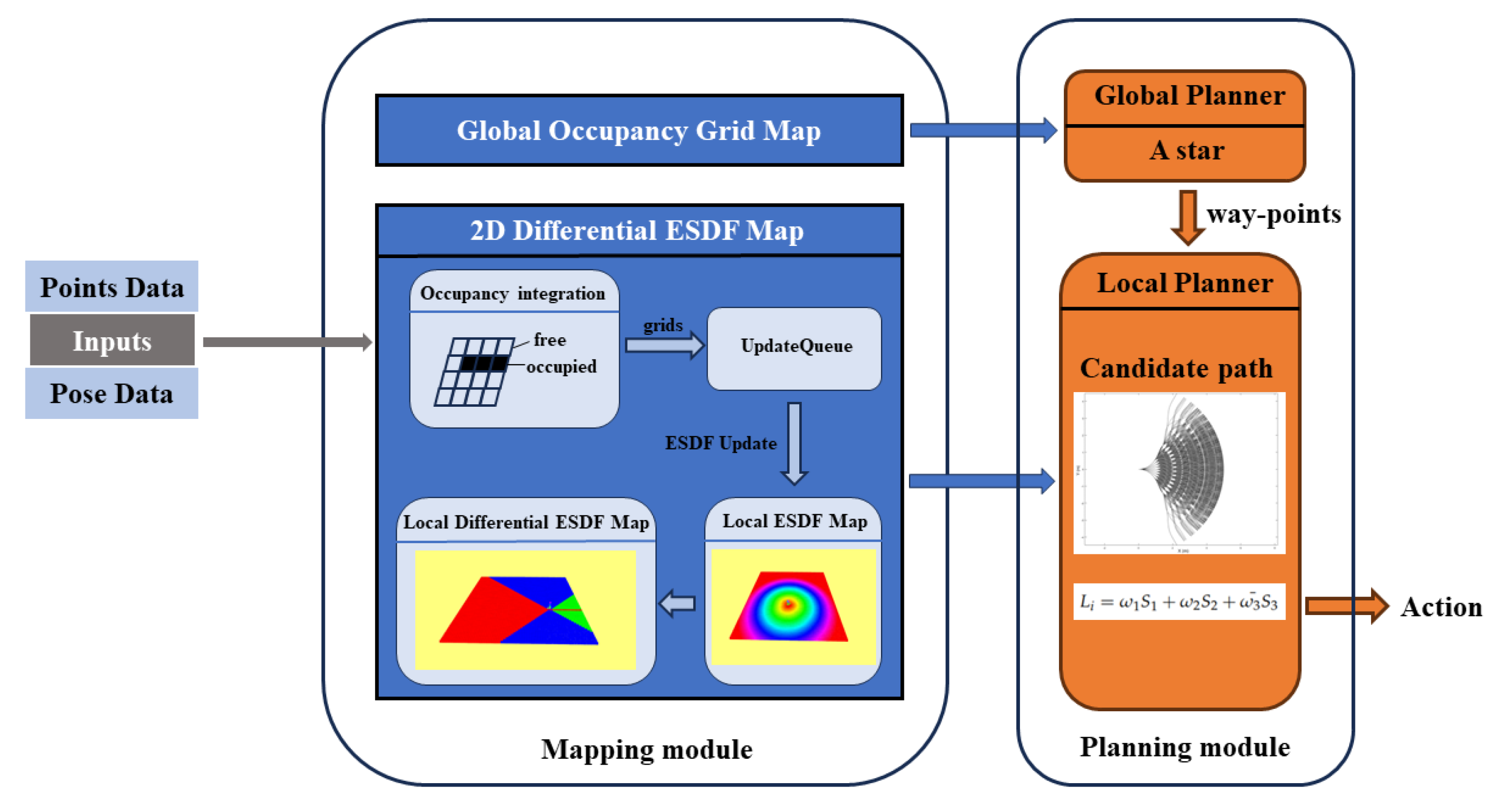
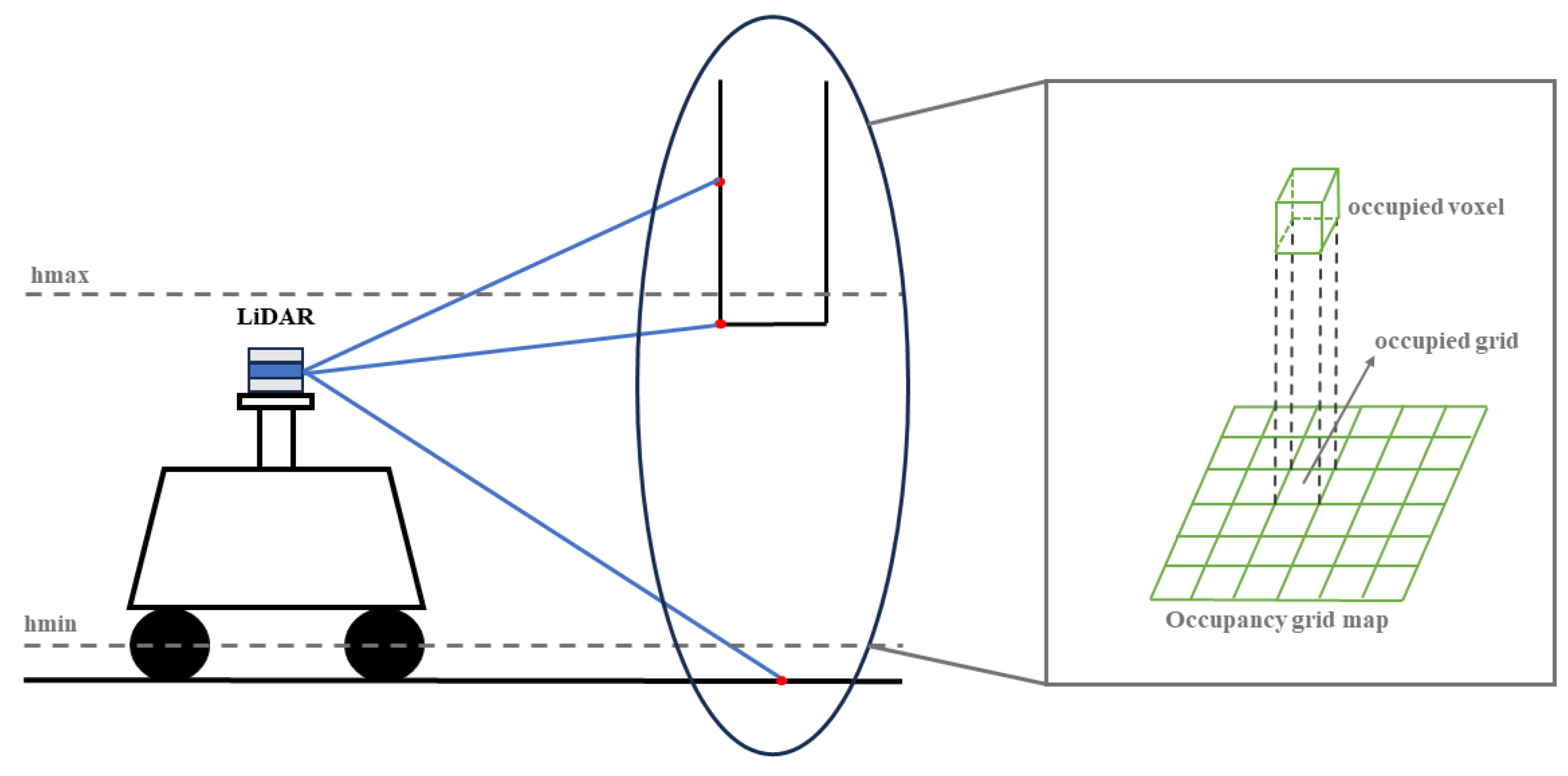
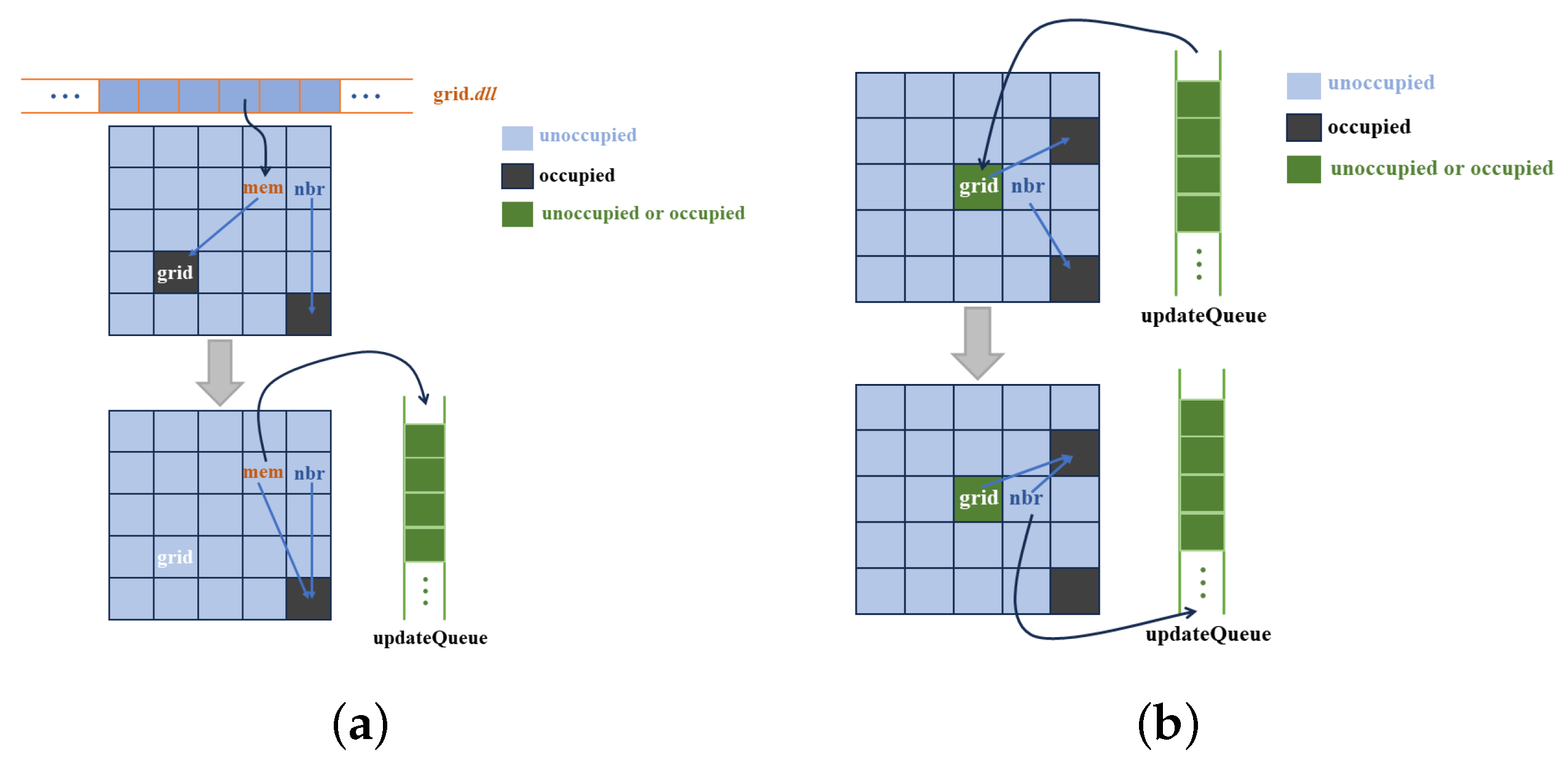
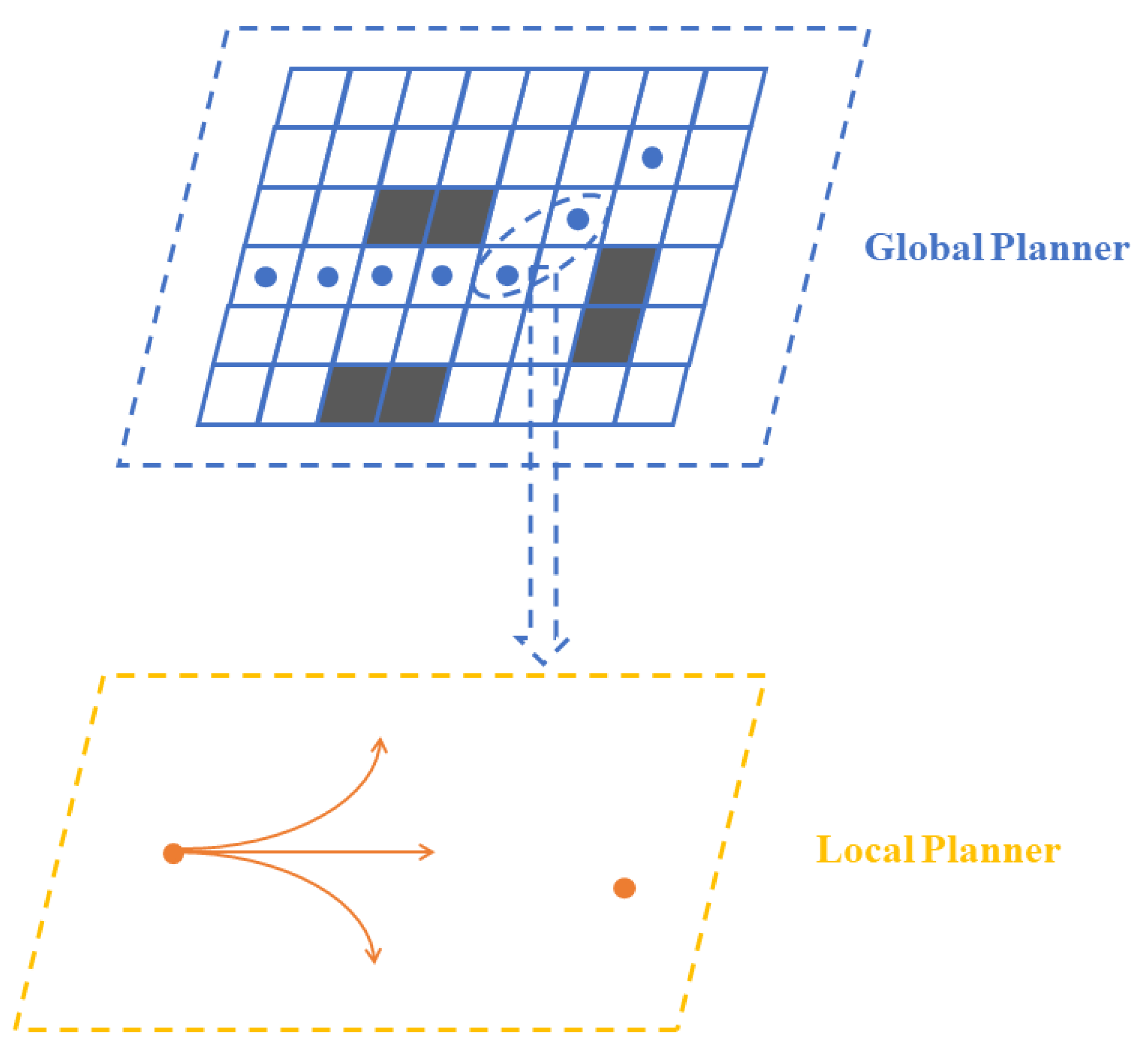
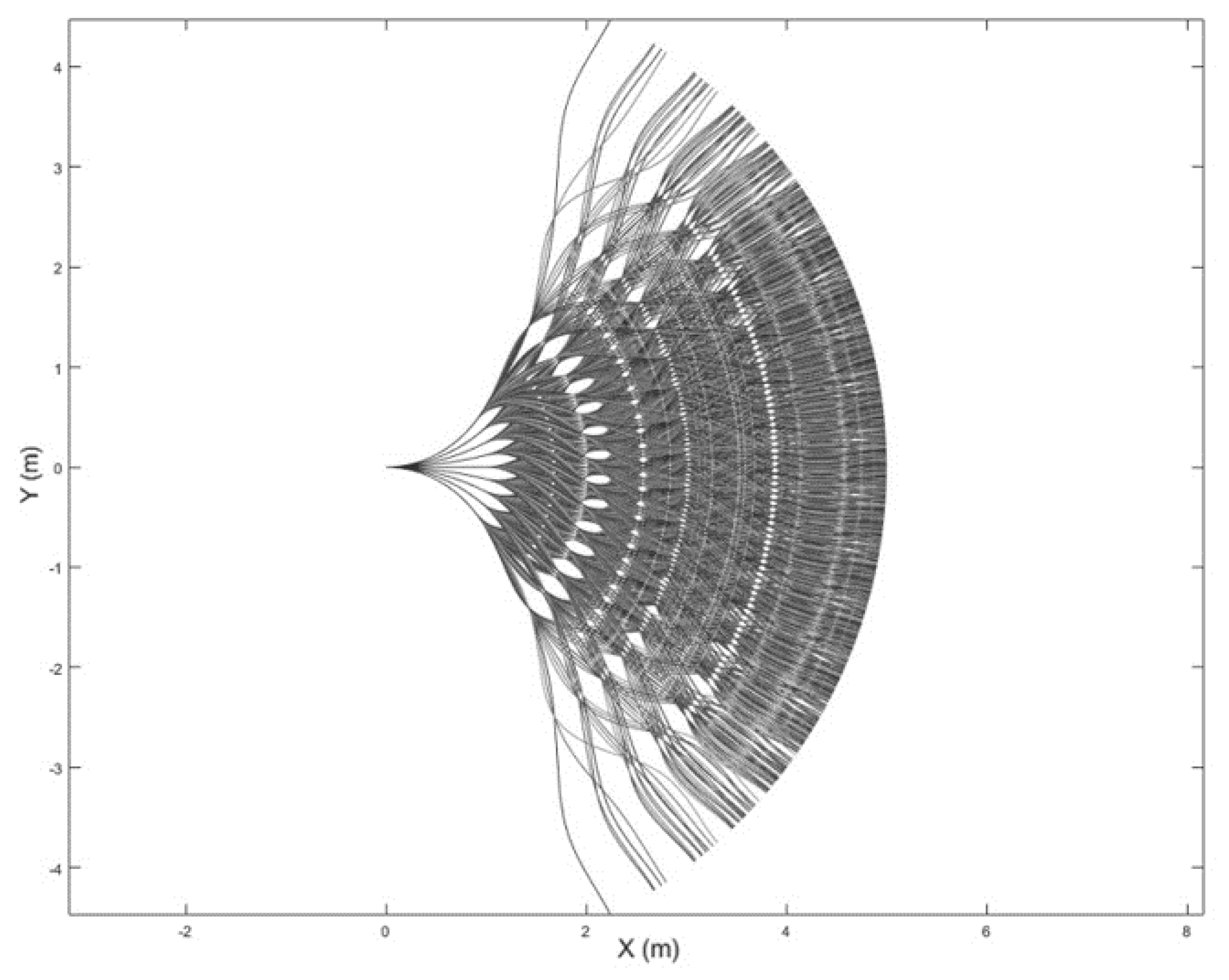
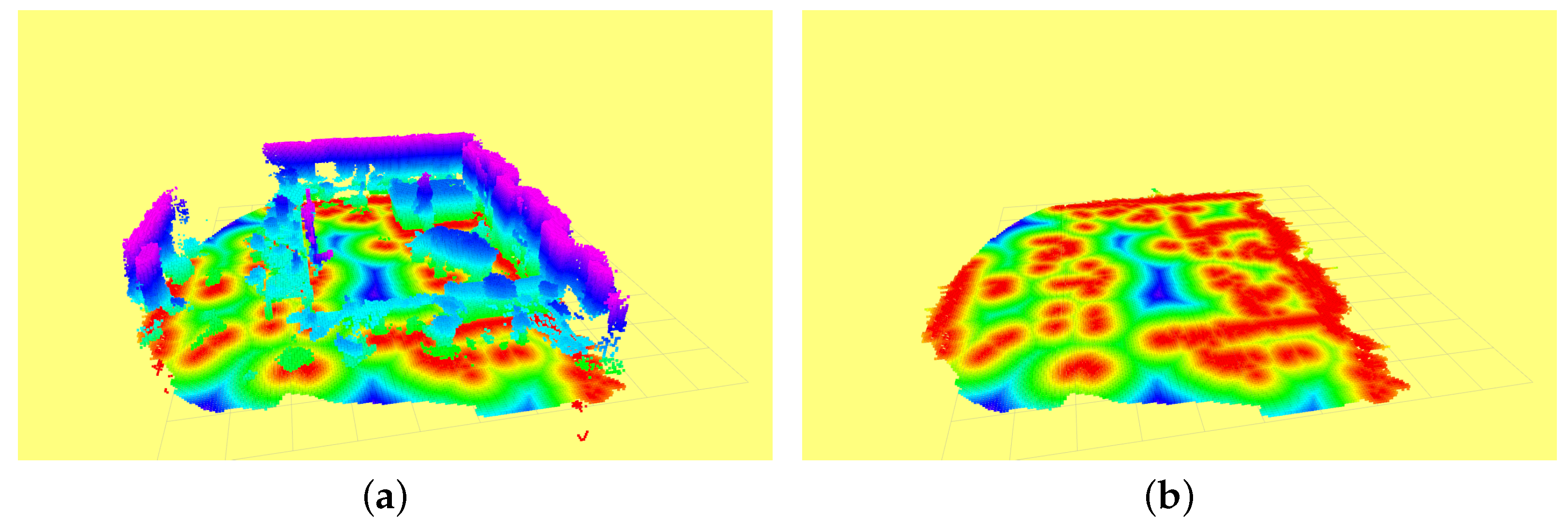
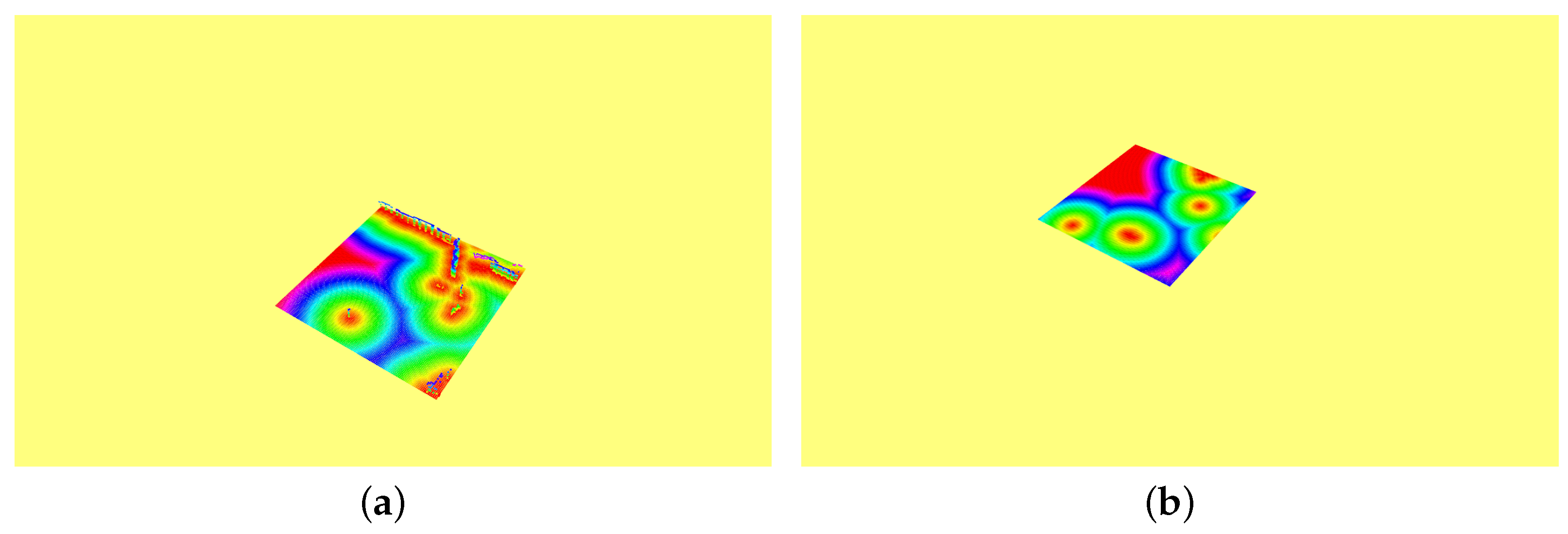

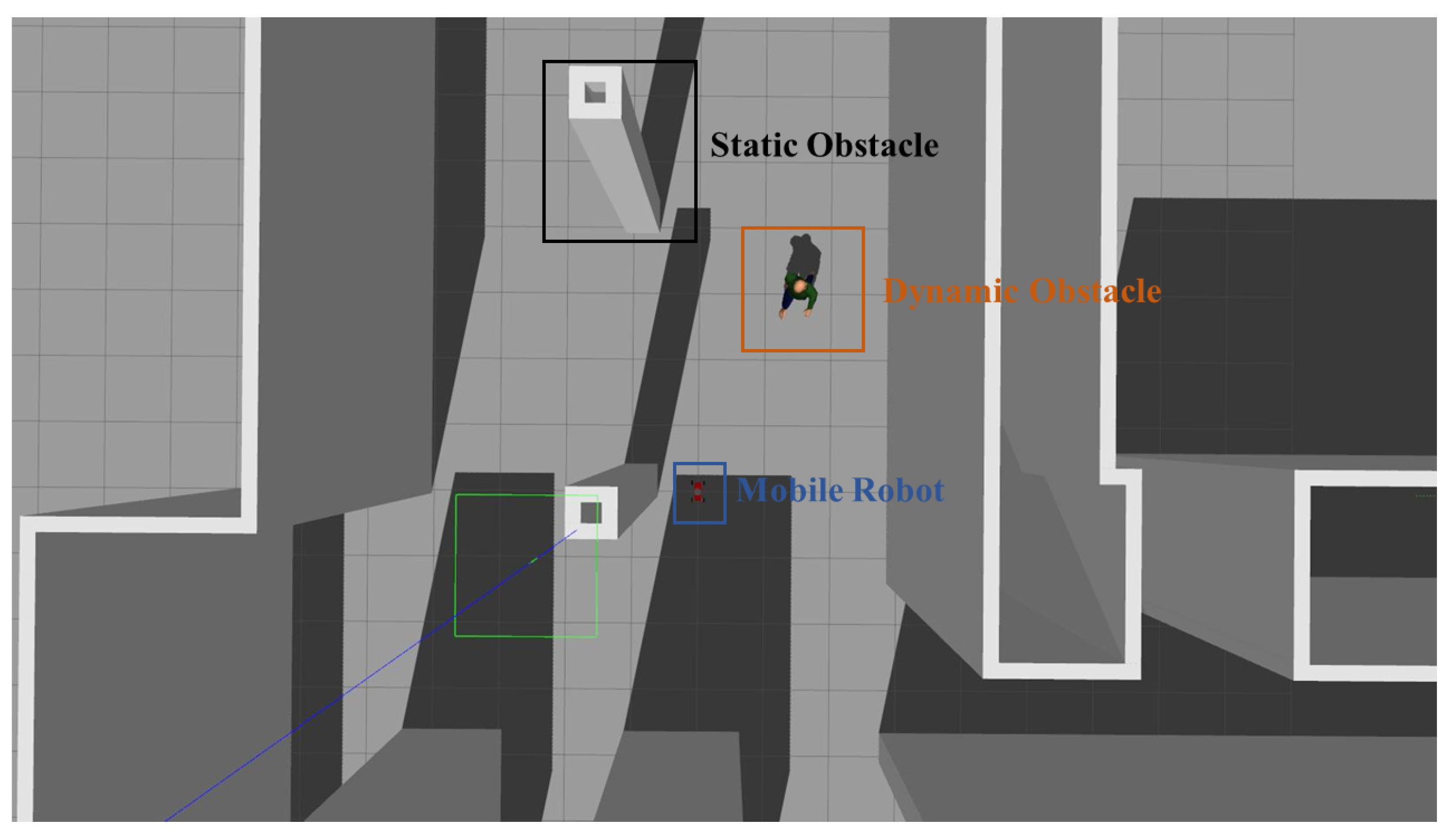

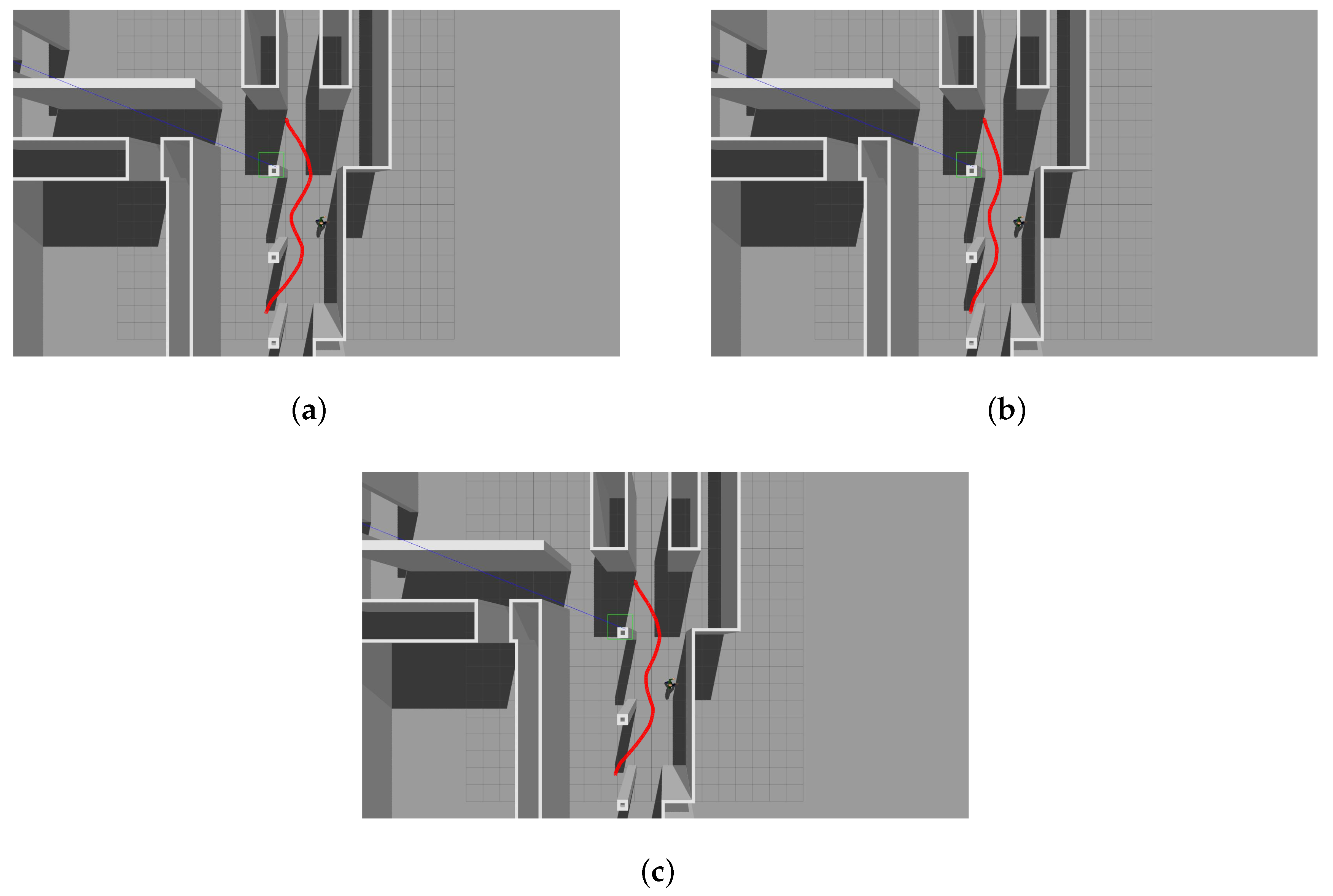
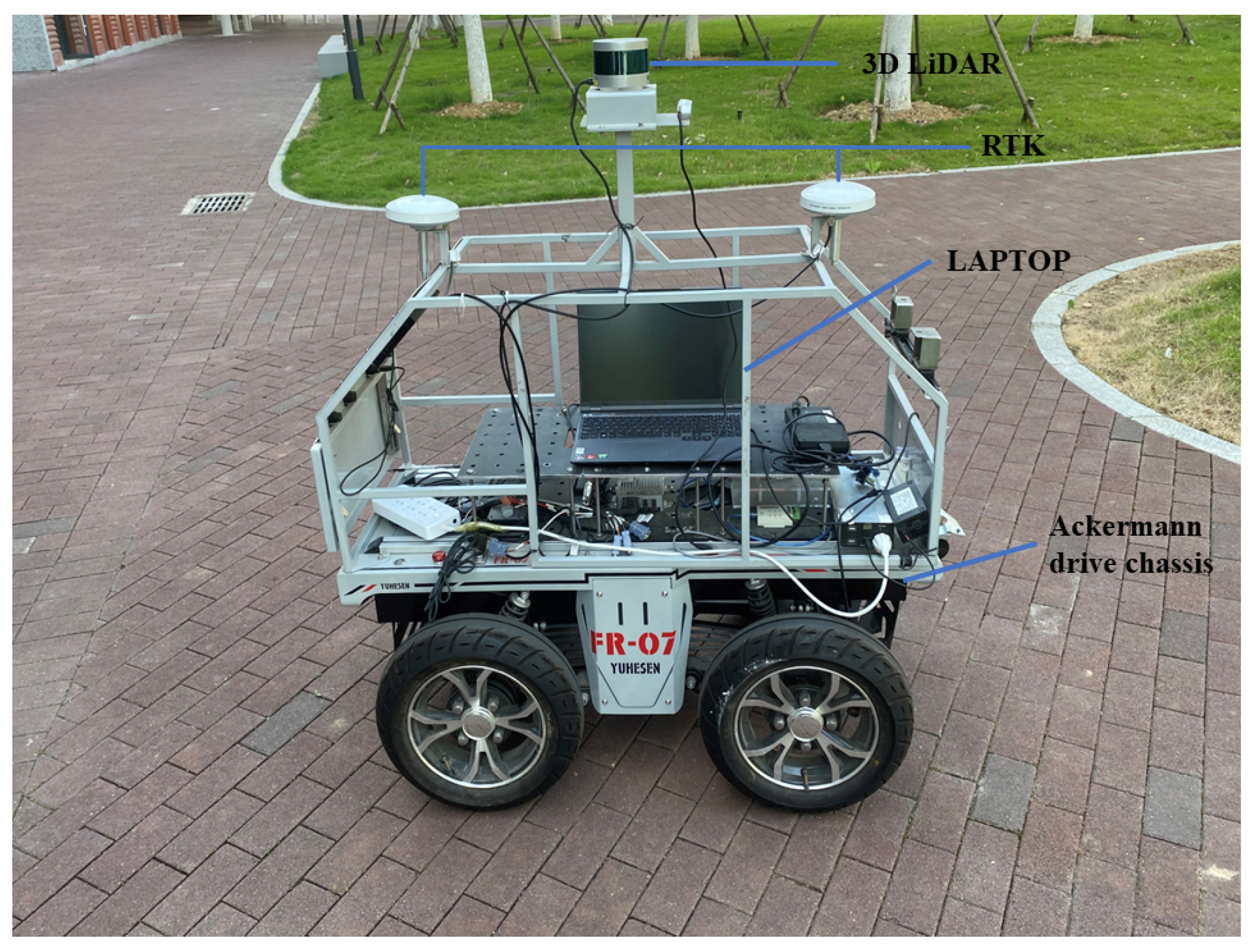
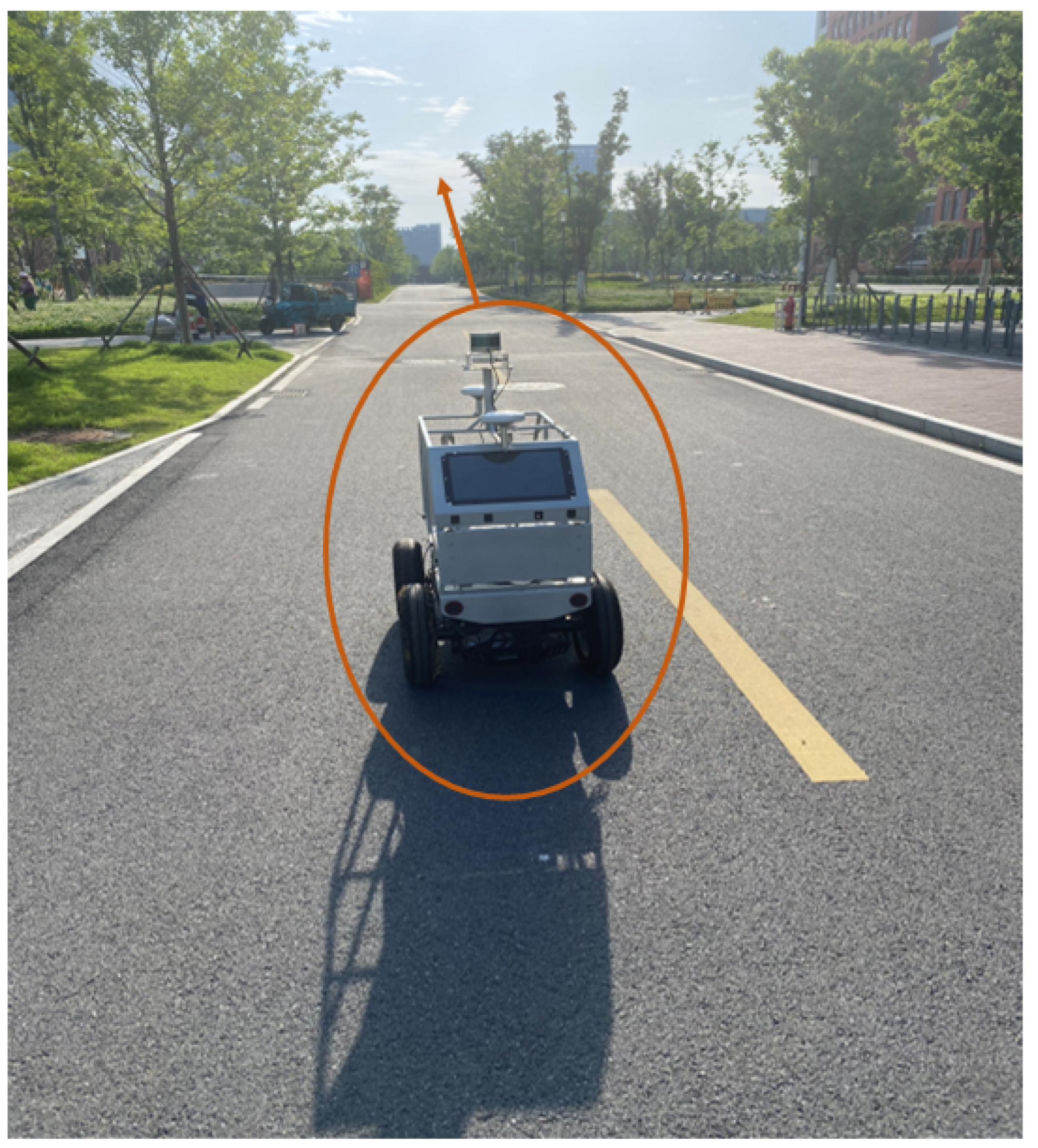
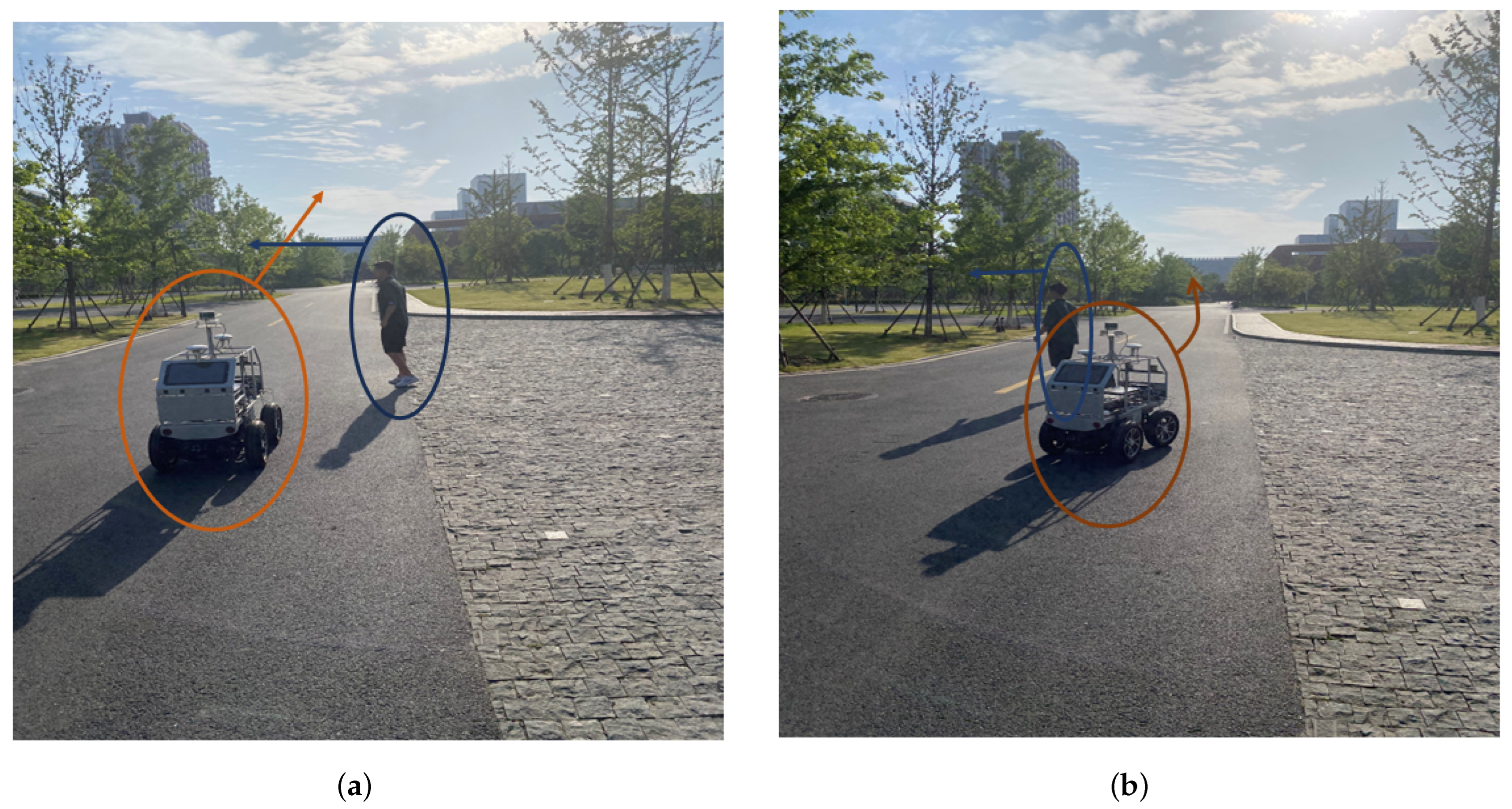
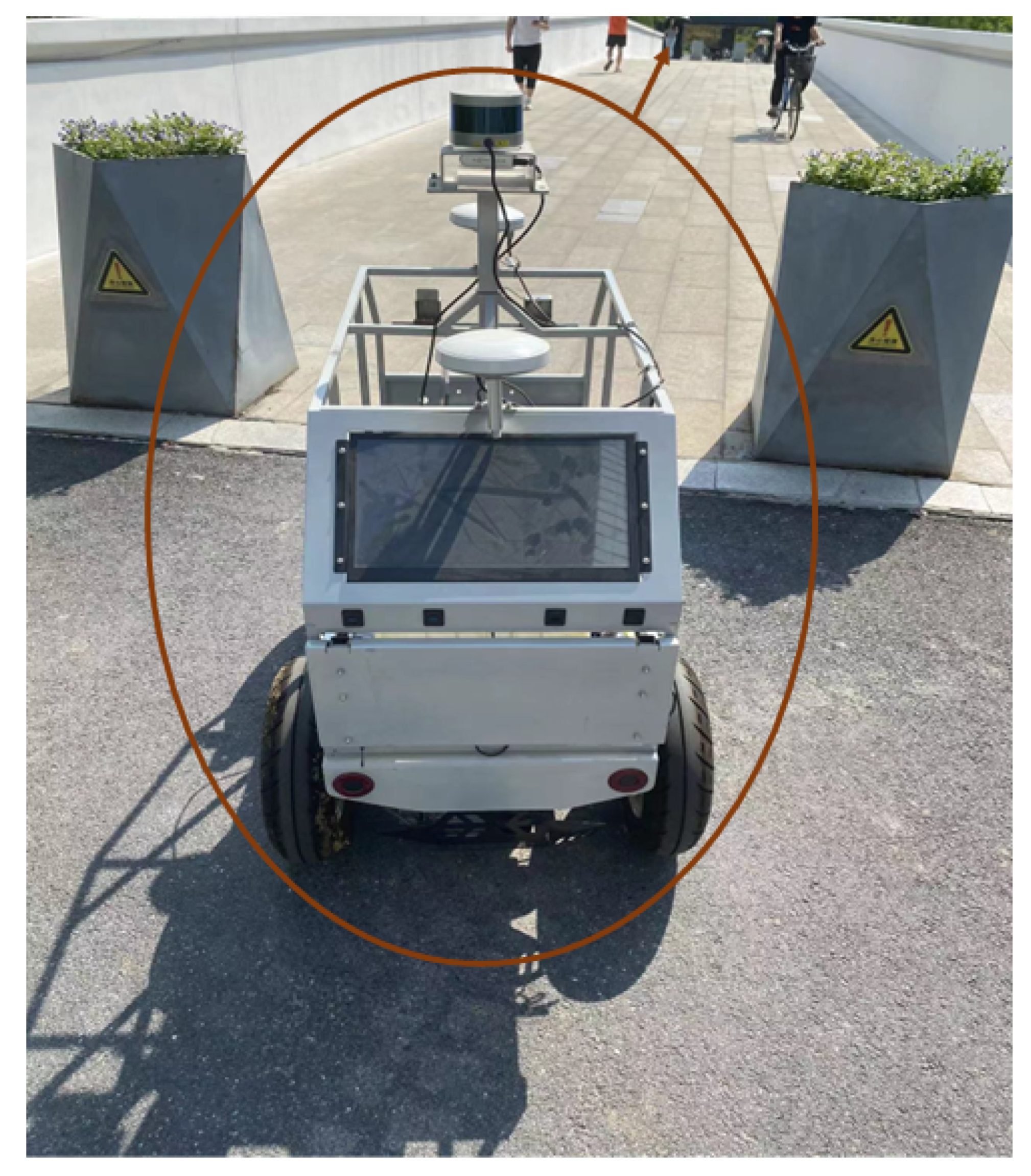
| Scheme | Classification | Dynamic Obstacle Avoidance |
|---|---|---|
| A* [21] | model-based | ✗ |
| D* [22] | model-based | ✗ |
| TSN [30] | learning-based | ✓ |
| Hybrid-RL [31] | learning-based | ✓ |
| Ours | model-based | ✓ |
| Name | Member | Abbreviation |
|---|---|---|
| grid | Postion () | pos |
| Occupancy | occ | |
| ESDF | ESDF | |
| Closest Obstacle Grid | cog | |
| Observed | obs | |
| Double Linked List | dll | |
| insertQueue | grid | InQ |
| deleteQueue | grid | DeQ |
| updateQueue | grid | UpQ |
| group1 | 10 | 1 | 1 |
| group2 | 10 | 0.5 | 1 |
| group3 | 10 | 1 | 0.5 |
| group1 | 10 | 0 | 0 | 0.467 |
| group2 | 10 | 1 | 1 | 1.692 |
| group3 | 10 | 0.5 | 1 | 1.690 |
| group4 | 10 | 1 | 0.5 | 1.396 |
Disclaimer/Publisher’s Note: The statements, opinions and data contained in all publications are solely those of the individual author(s) and contributor(s) and not of MDPI and/or the editor(s). MDPI and/or the editor(s) disclaim responsibility for any injury to people or property resulting from any ideas, methods, instructions or products referred to in the content. |
© 2024 by the authors. Licensee MDPI, Basel, Switzerland. This article is an open access article distributed under the terms and conditions of the Creative Commons Attribution (CC BY) license (https://creativecommons.org/licenses/by/4.0/).
Share and Cite
Zhong, J.; Zhang, M.; Chen, Z.; Wang, J. Dynamic Obstacle Avoidance for Mobile Robots Based on 2D Differential Euclidean Signed Distance Field Maps in Park Environment. World Electr. Veh. J. 2024, 15, 320. https://doi.org/10.3390/wevj15070320
Zhong J, Zhang M, Chen Z, Wang J. Dynamic Obstacle Avoidance for Mobile Robots Based on 2D Differential Euclidean Signed Distance Field Maps in Park Environment. World Electric Vehicle Journal. 2024; 15(7):320. https://doi.org/10.3390/wevj15070320
Chicago/Turabian StyleZhong, Jingze, Mengjie Zhang, Zonghai Chen, and Jikai Wang. 2024. "Dynamic Obstacle Avoidance for Mobile Robots Based on 2D Differential Euclidean Signed Distance Field Maps in Park Environment" World Electric Vehicle Journal 15, no. 7: 320. https://doi.org/10.3390/wevj15070320






